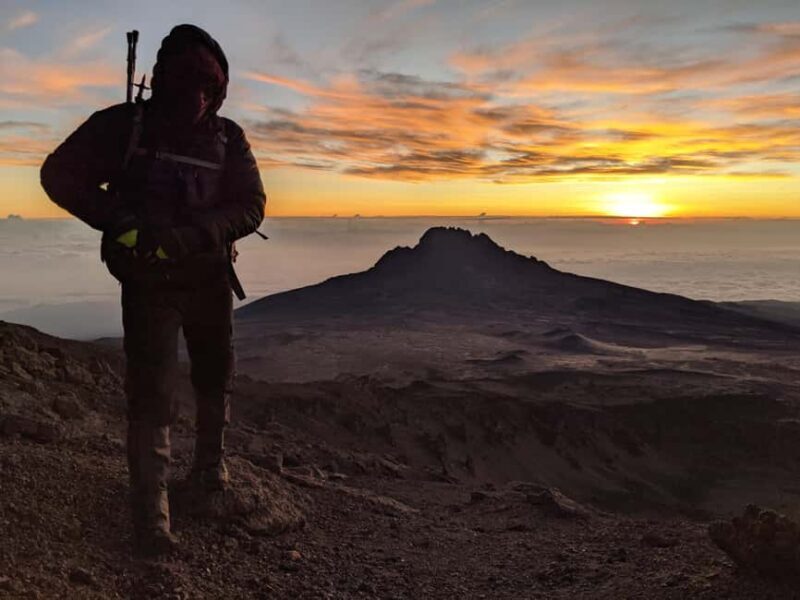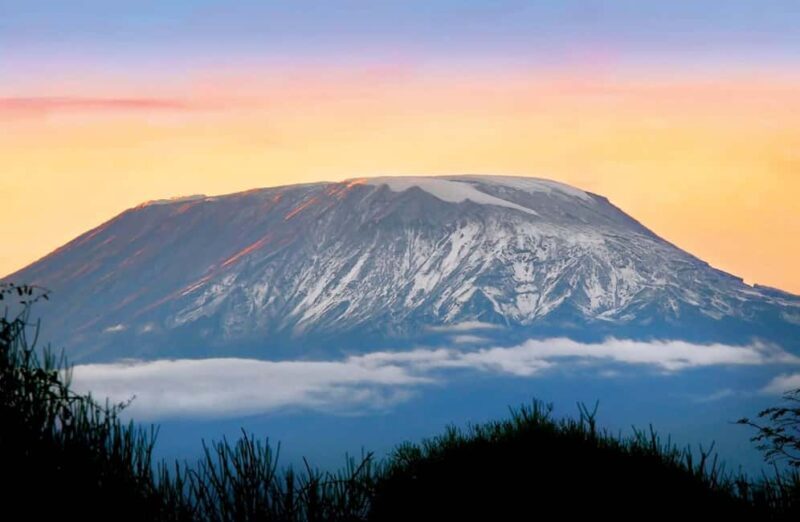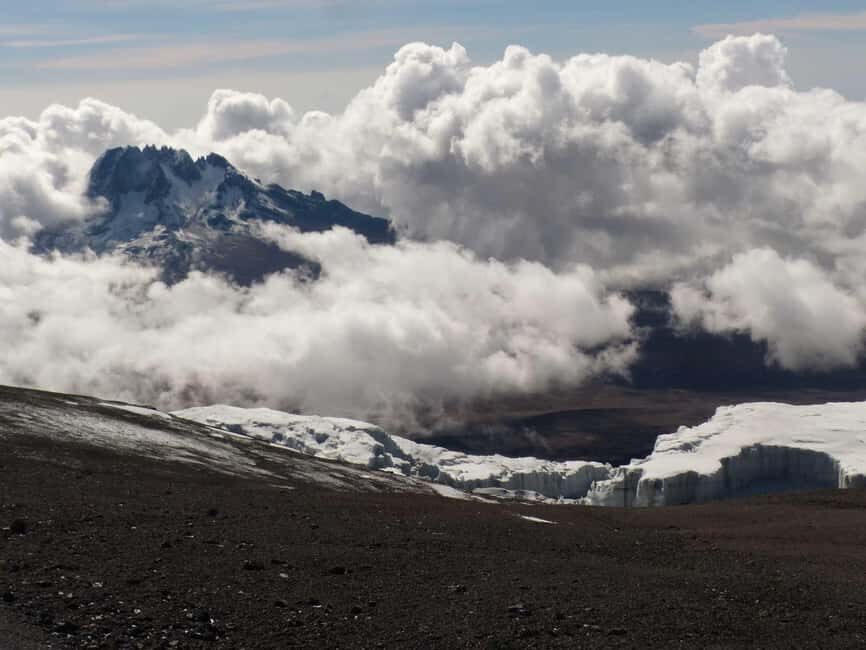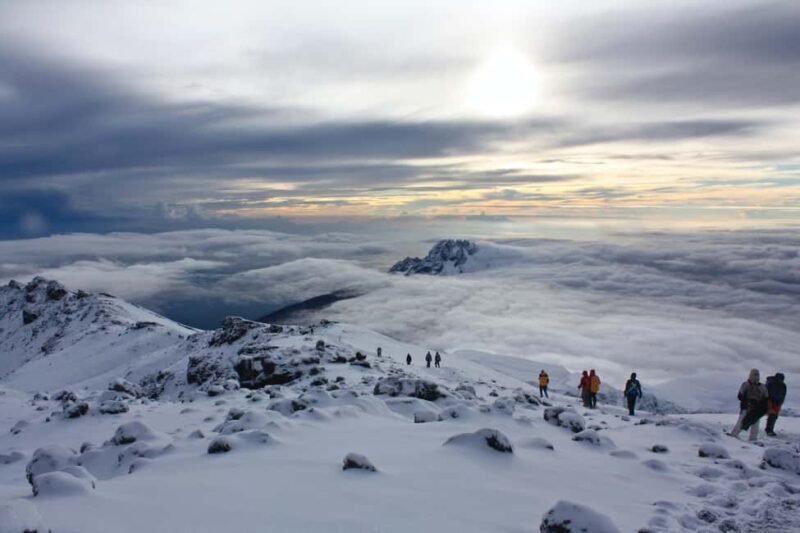Climbing Mount Kilimanjaro is often on many travelers’ bucket lists, and choosing the right route can make all the difference. This 6-day Rongai Route trek, offered by Jairos Adventure, promises a balanced mix of challenging ascent, breathtaking scenery, and well-organized logistics. While it’s not a quick jaunt, it’s designed to give you a genuine sense of achievement and plenty of memorable moments along the way.
What immediately stands out are the knowledgeable guides, the spectacular views from higher elevations, and the route’s quieter, less crowded nature. We also appreciate the inclusion of acclimatization days, which help reduce altitude sickness risk. That said, this trek requires a reasonable level of fitness, and the price might be steep for some, but the value in safety, guide expertise, and scenery makes it worthwhile for most serious trekkers.
This experience suits adventurous travelers seeking a more authentic Kilimanjaro climb, especially those who want to avoid the busiest routes. It’s perfect if you’re comfortable camping and want a guided, well-supported journey to Africa’s roof.
Key Points

- Balanced Itinerary: Includes acclimatization days to help prevent altitude sickness.
- Expert Guides: Highly experienced, English-speaking guides ensure safety and insights.
- Scenic Diversity: Trek through rainforest, moorland, and lunar landscapes with stunning vistas.
- Comfortable Camping: Camping gear and hot meals provided, with opportunities to relax at huts.
- All-Inclusive Value: Park fees, guides, porters, and meals included, enabling focus on the climb.
- Good for Serious Trekkers: Suitable for those with a reasonable fitness level and a sense of adventure.
An In-Depth Look at the Rongai Route Trek

Looking for more options in Nalemoru? We've reviewed plenty of other experiences.
Starting Out at Rongai Gate: Setting the Stage
The adventure kicks off in the early morning, with hotel pickup and a short drive to Rongai Gate. We liked that the journey began smoothly, with park registration handled efficiently. The drive itself is a nice intro to the Tanzanian landscape, and once you reach the gate, there’s a chance to meet your crew — guides, porters, and cooks — which helps build a sense of camaraderie. The first day’s trek is manageable, about 3-4 hours and 6.5 km, with an altitude gain of 700 meters. Expect a twisting path that intersects fields of maize, making the first steps feel grounded in local life.
Day 2: From Simba Camp to Kikelewa Caves
The second day involves a longer hike of around 6-7 hours, covering roughly 9 km. We loved the way this section transitioned from lush rainforest to the barren dunes of moorland, giving a real sense of Kilimanjaro’s changing landscapes. Lunch at Kibo Caves is a highlight, offering a chance to rest and refuel before tackling the next phase. Reviewers mention the stunning views of the vast, ethereal lobelias and heather vegetation, along with the thrill of seeing the mountain’s massive size looming in the distance.
Day 3: Ascending to Mawenzi Tarn
This 3-4 hour trek covers a modest 6 km, but the scenery is anything but. Progressing from the moorland to a stark, desert-like environment, you’ll notice the landscape becoming more rugged. Mawenzi Tarn Hut is situated at 4,330 meters and provides a welcoming spot for a leisurely hot lunch. We found this day to be a good balance of challenge and scenic reward, with reviews praising the guides’ ability to keep the group comfortable and motivated.
More Great Tours NearbyDay 4: To Kibo Huts and The Saddle
The push to Kibo Hut involves about 4-5 hours of walking over 9 km, with an altitude gain of 370 meters. The trail gets steeper and stonier as you approach The Saddle — a lunar-like volcanic landscape that connects Mawenzi and Kibo peaks. This section is especially awe-inspiring, with views of Kilimanjaro’s upper reaches and the vast, desolate terrain beneath your feet. Reviewers often mention how the guides do a superb job of explaining the geological features, making the landscape feel alive and meaningful.
Day 5: Summit Night — Reaching Uhuru Peak
This is the big one. Starting at midnight, the 6-8 hour ascent covers about 5 km, with a steep climb to Uhuru Peak at 5,895 meters. The journey is tough — a sharp slope, cold temperatures, and a long night — but the sense of accomplishment when standing on the summit is unparalleled. Gilmans Point and Stella Point serve as milestones en route to Uhuru, and many mention the breathtaking sunrise that colors the ice fields and peaks in peach hues. One reviewer captures the moment perfectly: “The first rays of sunlight hit the glacier, and I felt like I was on top of the world.”
Final Day: Descending to Marangu Gate
After celebrating your summit success, the trek down takes 5-6 hours over 20 km. You’ll pass the Mandara Hut and traverse lush rainforest again, a refreshing change after the lunar landscape. The journey concludes at Marangu Gate, where you receive your well-earned certificate. Reviewers note the descent is physically taxing but a joyful end to a challenging adventure.
The Practicalities: What You Need to Know

Included in the Price
At $2,629 per person, this trek offers comprehensive value. All park entry fees, government taxes, and levies are covered, along with expert guides, porters, and cooks. The camping equipment, including tents and mattresses, is provided, as are full board meals during the trek. Unlimited drinking water, refreshments, rescue fees, and emergency oxygen ensure safety and comfort.
What’s Not Included
Travelers should budget for international flights, travel insurance, pre-and post-climb accommodation, and personal expenses like souvenirs. A sleeping bag is necessary, and visa fees must be managed separately. It’s worth noting that extra meal orders and portable toilets are not included, so plan accordingly.
Logistics and Comfort
Transport from your hotel to the park gate and back is arranged, simplifying planning. The group size tends to be small enough for personalized attention, but exact numbers aren’t specified. The trek’s duration and timing make it a good option for those who want a substantial challenge without the longer 7+ day routes.
Preparation & Recommendations
While the trek is physically demanding, the inclusion of acclimatization days helps reduce altitude sickness risks. It’s recommended you arrive a day early in Arusha to settle in and meet your team. You’ll want to bring warm clothing, sturdy shoes, sunscreen, a hat, gloves, and a camera to capture the stunning scenery.
Authentic Experience & Guides

From reviews, it’s clear that the guides are a highlight of this climb. They are described as very experienced, informative, and attentive to individual needs. Many mention the high wages paid to guides and porters, which is a good sign that the company values fair treatment. Guides like Robert and John are praised for their professionalism and friendliness, making the trek more enjoyable.
Scenic Highlights
The route’s top advantage is its diverse scenery. You’ll trek through rainforest teeming with birds and monkeys, then shift into the barren, moon-like landscape of the saddle. The views from high elevations are simply spectacular, with some reviewers noting that the mountain’s upper regions are as breathtaking as advertised.
Unique Aspects
Unlike some more popular routes, the Rongai route is noted for being quieter, giving trekkers a more solitary experience. The route also offers a gentle ascent, making it slightly less strenuous than other paths, especially with the acclimatization days built in.
Final Thoughts: Is It Worth It?
Absolutely. This trek offers excellent value for those wanting a guided Kilimanjaro climb with a focus on safety, scenery, and authentic Tanzanian hospitality. The combination of experienced guides, stunning landscapes, and well-organized logistics makes it an appealing choice for serious trekkers.
However, it’s not a casual walk in the park. You’ll need good fitness and preparation, and be ready for some cold, challenging nights on the mountain. The price reflects the comprehensive support, including all park fees and professional staffing, which is crucial at high altitude.
This adventure is perfect for travelers seeking a meaningful, well-supported climb that balances challenge with comfort. It’s also an excellent option if you prefer a route that’s less crowded but just as rewarding.
FAQ
Is this trek suitable for beginners?
While it’s accessible to those with a decent fitness level, the trek is physically demanding with altitude considerations, so some trekking experience is recommended.
Are meals provided during the climb?
Yes, full board meals are included on the trek, with hot lunches at various camps and hot meals at huts. Extra orders are not included.
What gear should I bring?
Comfortable shoes, warm clothing, a hat, gloves, sunscreen, a camera, and snacks. A sleeping bag is not included, so consider bringing or renting one.
Are park fees included?
Yes, all applicable park entry fees, government taxes, and levies are covered in the price.
What is the group size?
While not explicitly stated, reviews suggest small groups, which helps with personalized attention and safety.
Do guides speak multiple languages?
Guides speak English and other languages including Swahili, Spanish, German, Italian, and French, making communication accessible for international travelers.
Overall, this Kilimanjaro Rongai Route trek delivers a well-rounded, authentic mountain adventure for those ready to tackle Africa’s tallest peak. With expert guidance, incredible scenery, and a supportive team, it’s a climb that offers more than just reaching the summit — it’s about truly experiencing Kilimanjaro’s diverse facets.
You can check availability for your dates here: